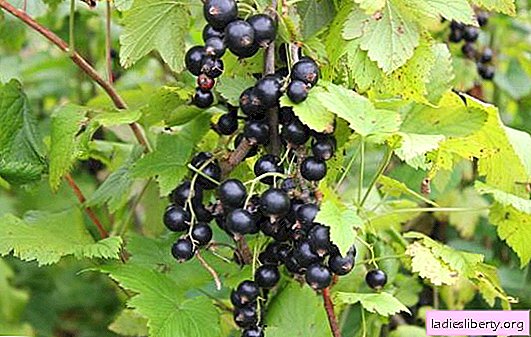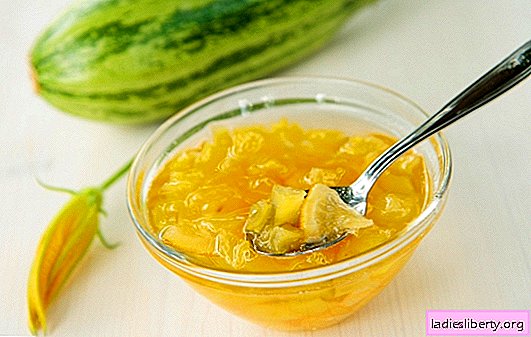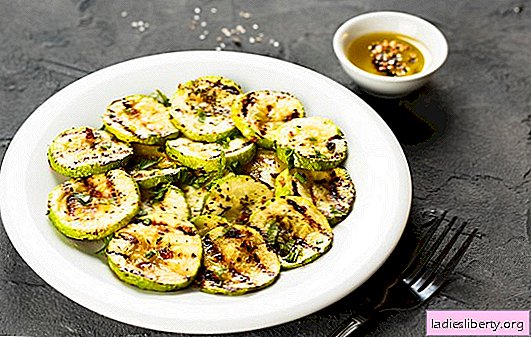
Growing currants in a summer cottage, the gardener faces many problems, and one of them is dropping berries.
Why do currant berries crumble and how to deal with it?
Berries in currants fall: a problem in care
It’s not difficult to understand the reasons why currant yields are reduced and the bush sheds ovaries. Often the problem is a lack of plant care.
1. The presence of old shoots reduces productivity.
The reason currant berries fall off lies at the age of the shrub. Young, recently planted seedlings shed almost all the ovaries. The plant does not have enough strength to give a full crop.
An adult shrub, on the other hand, drops the ovaries from those branches that have exhausted all resources. Such shoots should be removed immediately.
Important! Currants need pruning, during which the bush is rejuvenated and thinned.
Carrying out pruning, all old branches are cut out, new strong shoots will grow to replace them, which will give a good harvest.
2. Untimely watering leads to the loss of berries.
Very often, the gardener forgets to water the bush. Untimely watering is another reason why currant berries are showered.
During the formation of berries, the plant needs watering. In dry and hot weather, the frequency of watering should be increased. Experienced summer residents are advised to water currants in several stages:
• once during the formation of berries;
• twice during fruit ripening.
Water the currant so that the water penetrates to the depth of the roots.
3. Wrong place for planting shrubs.
The choice of place for planting currants must be approached responsibly. Currants will not be able to grow and fully bear fruit in the shade. Under such growing conditions, the currant will crumble. For planting a seedling, it is better to choose a well-lit place.
4. Poor pollination often leads to the fall of currant berries.
Currants need cross-pollination. One or more bushes of the same variety will not fully bear fruit. Pollination will be partial, the berries will begin to fall.
For full development on the site, you need to grow several varieties of currants with different ripening berries, which can fully pollinate.
Important! If the neighbors grow currants, feel free to plant nearby. For good pollination, the distance between plants can be up to 20 meters.
Currants crumble due to illness
If all growing conditions are met, and the yield does not increase, you should pay attention to the disease of currant.
Most often, blackcurrant is affected by powdery mildew - this is a fungal disease that appears in May - June. Signs of the disease can be seen with the naked eye: the lower part of the currant leaf is covered with white coating. When the disease progresses, the fungus switches to shoots and green fruits that do not have time to ripen and fall off. The pathogen overwinters on young shoots and leaves that have not fallen.

Burning all damaged branches will help get rid of the disease. The bush is sprayed with antifungal drugs. The following composition has proved itself well: 20 g of copper sulfate, laundry soap, 10 liters of water. Mix everything and regularly spray currants.
As a preventive measure, soil loosening, timely pruning of the bush, spring spraying with preparations with copper are carried out.
What if the berries of red currant fall?
As a rule, red currants crumble due to a fungus that hibernates in fallen leaves. A disease of red currant is called - balsamy rust. The disease progresses in the spring, when fungal spores spread to shoots, pour and ovaries. The fruits fall and the yield decreases.

You can avoid infection by removing weeds under the bushes in time. In the fall, sanitary pruning is carried out, all fallen leaves are removed and burned.
In the spring, a bush of red currant is treated with a 3% solution of Bordeaux liquid. During flowering, the treatment must be repeated, but a 1% solution of the mixture is used for this.
Bordeaux mixture can be prepared from 300 g of copper sulfate and 600 g of lime. Substances are dissolved in 10 liters of water.
Currant Pests
The fruits and ovaries of the currant crumble due to damage to the bush by pests. If a plant grows long in one place, then with age it becomes vulnerable and is attacked by pests.
• Goose bump - one of the common pests of currants.

A harmful insect lays its larvae in the flowers and fruits of the currant. Caterpillars emerge from the larvae, which gnaw out the ovaries from the inside. Damaged berries crumble. Caterpillars winter in the ground.
You can get rid of the firebox manually. To do this, damaged berries are torn off and destroyed. In autumn, all plant debris is removed under the bushes, spuds, mulch the ground with peat or fresh manure.
In early spring, the bushes are unlearned, but the manure is left in place. The fire must go.
• Berry sawfly
This pest damages blackcurrants. Females lay eggs at the base of the ovaries. Caterpillars hatch from the larvae, which feed on the fruits, gnawing them from the inside. All damaged berries turn black and fall off.
You need to deal with a pest in the same way as with a fire spreader.
Currant berries crumble: malnutrition
Fertilizing the shrub with mineral fertilizers in the summer is not enough, they are not able to provide all the needs of the plant.
Replenishing the supply of nutrients and preserving the harvest is quite simple, just take a closer look at the currants. The shrub itself signals what it lacks.
• nitrogen deficiency
Lack of nitrogen is manifested by a weak color of leaves, thin shoots, sparse flowering. At the top of the bush, the leaves turn yellow and sometimes bluish. Harvest from such a bush is small: the berries crumble before they ripen. Weakened bushes begin early leaf fall.

You need to feed shrubs with a solution of fertilizers. Organic has proven itself well: chicken droppings, manure or mullein. In the absence of organic matter, urea can be used. One adult bush takes up to 15 liters of fertilizing.
The safest methods to control pests and diseases of currant
Many gardeners do not want to plant currants in their garden, due to lack of time and fear not to cope with the cultivation of crops. However, growing currants is not difficult. The most common currant problem is falling berries. You can get rid of this, and it is not necessary to go around the shrub all summer and to determine all its sores. There are complex safe methods, using which you can get rid of several problems at once.
Rule number 1: any damaged parts of the plant must be removed and burned, loosen the soil under the bushes, to prevent the spread of weeds.
Rule number 2: Mandatory mulching of the earth with herbs: wormwood, leaves of garlic and onions.
Rule number 3: It is advisable to plant medicinal plants around the shrub: calendula.
Rule number 4: Use the drug "Fitosporin" for all fungal diseases, which is biological and does not affect bees. Processed berries can be eaten right away. The drug is intended for a comprehensive fight against diseases.











